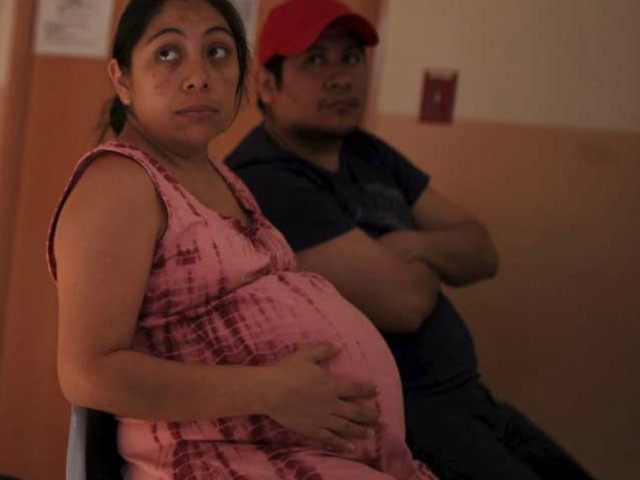The Brazilian Conference of Catholic Bishops has rejected the left’s attempt to promote abortion in areas affected by Zika.
The bishops acknowledge the “virus deserves special attention by its probable link to microcephaly,” but insist it is unacceptable to immediately jump to abortion.
“The alert, however, should not panic us,” they wrote. “Nor use it to justify abortion for cases of microcephaly as proposed regrettably by certain groups that organize to take the matter to the Supreme Court, a total disrespect for the gift of life.”
Planned Parenthood and leftist politicians have argued that easier access to abortion will help contain the damage the Zika virus is causing in Latin America.
“It is essential to recognize that women and men have the right to make decisions and existential options and one of the most important choices in the life of a woman is to have children or not,” wrote sociologist Jacqueline Pitanguy in O Globo.
Virologist Gubio Soares, who first identified the presence of the pervasive Zika virus in Brazil, suggested that legalized abortion in French Polynesia may have prevented scientists from uncovering a link between Zika and severe infant deformities sooner.
During a lecture, Soares claimed scientists do not know for sure if a link exists between Zika and microcephaly. This is mainly because women in places where Zika breeds often abort children who show signs of microcephaly, a disorder now linked to the virus. Microcephaly occurs if the brain does not form properly in pregnancy or stops growing after birth, causing a small skull. Children can suffer from seizures, developmental delays, intellectual disability, and feeding problems.
Fear of microcephaly or other complications due to Zika has pushed women to choose illegal abortions. Doctors indicate women in all social classes are seeking out these abortions “in despair over the possibility of deformity.” Some even go through with abortions without concrete proof of complications.
Doctors cannot diagnose microcephaly until the third trimester or after birth:
In many cases, microcephaly may not be evident by ultrasound until the third trimester and, therefore, may not be seen on ultrasounds performed earlier in pregnancy. The diagnosis of microcephaly may be made at birth or later in infancy. The baby’s head circumference is much smaller than normal. During the physical exam, the doctor obtains a complete prenatal and birth history of the child. In older babies and children, the doctor may also ask if there is a family history of microcephaly or other medical problems. Sometimes the child is born with a normal head circumference but then acquires microcephaly because of a serious condition, such as certain genetic disorders, stroke, traumatic injury, or poisoning. The doctor will also ask about developmental milestones since microcephaly can be associated with other problems, such as intellectual disability. Developmental delays may require further medical follow-up for underlying problems.
“Health is a right that must be guaranteed. Without a comprehensive and effective national health policy, all efforts to fight the disease will be compromised,” said the bishops.
Brazil has outlawed abortion except in cases of rape, incest, or when the mother’s life is in danger, and a judge must approve each case.
“We should never talk about ‘therapeutic’ abortion,” Honduran Cardinal Oscar Rodriguez Maradiaga said in his homily. “Therapeutic abortion doesn’t exist. Therapeutic means curing, and abortion cures nothing. It takes innocent lives.”
Journalist Ana Carolina Caceres, 24, survived microcephaly and thrived, even though doctors said she would never walk or talk.
“When I read a report about the project by the [Brazilian] Supreme Federal Court to allow abortion in microcephaly cases, I took it personally,” she said. “I felt attacked and offended.”
The bishops also criticized Brazilian officials over sanitation issues that allowed mosquitoes to multiply.
O Globo reported that the government has recorded 1,499 notifications of the disease in the first 29 days of 2016. Doctors confirmed 64 Zika cases among those. Despite the outbreak, officials have not demanded that hospitals report confirmed Zika cases for tracking. Edimilson Migowski, chief of pediatric infectious diseases at the Federal University of Rio de Janeiro (UFRJ), claims the “records of suspected cases account for only 2% of the total number of infected people, which is close to 75,000.”
Migowski also blamed the city council for the disease because officials have not held an Index Survey on the Aedes aegypti mosquito since last October. These surveys track Aedes aegypti mosquitos, which carry the Zika virus. Silvia Cavalcantti, graduate coordinator in Microbiology UFF [Fluminense Federal University], placed the same complaint.
“Working with a LIRAa [the survey] is something basic,” she explained. “Knowing the most affected areas is essential to promote more intensive actions against epidemics. If the surveys show that an area is at risk, agents can be relocated to minimize the effects.”
She added, “In addition, the work must be done all year. It’s no use fighting the vector seasonally.”

COMMENTS
Please let us know if you're having issues with commenting.